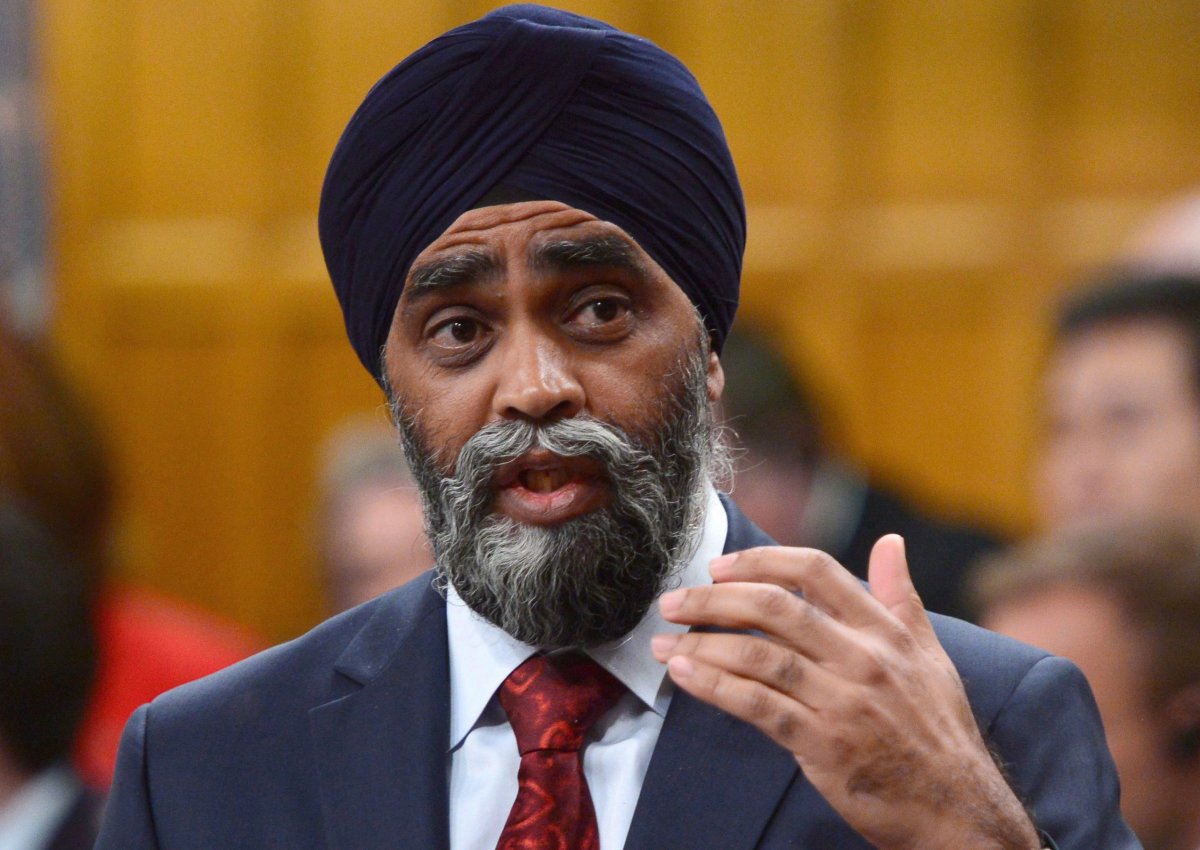The federal government has been using a secret weapon to fight back against pressure from NATO and some allies like the United States to increase Canadian defence spending.

The weapon? New math.
The Department of National Defence has compiled new figures to illustrate more directly how different countries calculate their defence spending compared to Canada.
The point, say government sources familiar with the endeavour, is to illustrate how much higher Canadian defence spending would be than it is now if it included the same things other NATO allies put in their calculations.
READ MORE: Canada’s plan to increase defence spending delayed until after major NATO summit
Earlier this year, Defence Minister Harjit Sajjan said officials were looking at how Canada calculates military spending compared to other NATO members in order to better ensure a more accurate “apples to apples” comparison.
Items that other countries consider defence spending – but Canada does not – include the coast guard, some veterans’ benefits, federal police forces and border guards.
“There are lots of things that we spend on that other countries count, but we don’t,” one senior official told The Canadian Press, speaking on condition of anonymity in order to discuss the matter in advance of this week’s NATO meetings in Brussels.
“And the NATO calculation formula is also so cryptic and backwards.”
A spirited debate about the defence spending levels of individual allies is expected to feature prominently Thursday when Prime Minister Justin Trudeau sits down with other NATO leaders, including Donald Trump.
The U.S. president has been pressing NATO members to increase the amount they spend on their militaries after allies agreed in 2014 to work towards an agreed-upon defence spending target of two per cent of GDP.
Only five have reached that goal, and Canada is not one of them; it currently spends about one per cent of GDP on defence, ranking it in the bottom half of allies.
READ MORE: Justin Trudeau stands by defence spending amid fresh calls for NATO to pony up more cash
But the Liberal government has largely dismissed the two per cent target, saying there are more important ways to measure whether individual NATO members are supporting the alliance.
Part of the government’s message, which Trudeau is expected to repeat in Brussels, is that Canada is contributing in many other ways, such as deploying 450 troops to lead a NATO force in Latvia starting in a few weeks.
But Canadian diplomats and military officers are also presenting the alternate figures to counterparts at NATO and other allied capitals, officials said, to underscore the problems with the spending metric.
“When you talk about the fallacy of the two-per-cent spend, that in many ways is a perfect example of that,” the senior official said of the differences in how different NATO allies calculate their spending.
“So that is definitely a kind of education or awareness campaign that’s been happening against the allies.”
The response from NATO and close allies appears to be lukewarm, with officials from both categories saying it has already been well defined what can and cannot be counted as defence spending.
READ MORE: ‘Sorry, Mr. President, that’s not how NATO works’: Ex-U.S. NATO rep responds to Donald Trump
“The fact is that NATO uses an agreed-upon definition of spending, which includes a whole bunch of different things,” said one NATO official, speaking anonymously because they were not authorized to comment publicly.
“So the figures we have may not align precisely with what nations do if they include different things, but our definition is agreed upon by all 28 allies. It’s a long-standing definition that we use to compare.”
Many expect the Liberal government increase military spending when it unveils its defence policy update on June 7, after Sajjan and other ministers promised “significant investments” in the armed forces.
Expectations are sky-high for the new defence policy, but reaching NATO’s two per cent of GDP target would require doubling the $20 billion Canada current spends on defence each year.



Comments